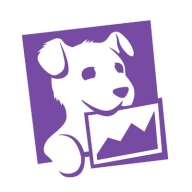

Cisco Nexus Dashboard Fabric Controller and Datadog both operate in the domain of network management and monitoring. Cisco demonstrates superior capability in managing complex network environments with its stability and network-specific features, while Datadog shows strength in application monitoring and analytics across diverse ecosystems.
Features: Cisco Nexus Dashboard Fabric Controller comes with essential features like stability, connectivity monitoring, and security integration, enhancing network management efficiency. It also provides automation capabilities crucial for handling complex environments. Datadog offers advanced dashboards, metrics visualizations, and comprehensive monitoring. It integrates well with various tools, making it effective for extensive observability and app monitoring.
Room for Improvement: Cisco Nexus Dashboard Fabric Controller can improve its integration capabilities, ease of setup, and reduce complexity for better user experience. Better user-friendliness and enhanced reporting tools are needed. Datadog could work on more advanced analytics, enhancing its cost management, and interface improvements. Users look for consistency in APIs and competitive pricing.
Ease of Deployment and Customer Service: Cisco Nexus Dashboard Fabric Controller is mainly deployed on-premises or private clouds, focusing on hardware management. User feedback on support is mixed, desiring better operational assistance. Datadog's deployment is flexible across various cloud environments, making it suitable for diverse settings. Its customer service is seen as broad but not personalized.
Pricing and ROI: Cisco Nexus Dashboard Fabric Controller is considered expensive but offers value in reliability and long-term ROI in network management. Datadog's pricing is based on usage and features, which can become costly and complex. Users appreciate its flexible module-based pricing but suggest careful cost oversight due to potential unexpected charges.
| Product | Market Share (%) |
|---|---|
| Datadog | 3.1% |
| Cisco Nexus Dashboard Fabric Controller (Formerly DCNM) | 0.6% |
| Other | 96.3% |


| Company Size | Count |
|---|---|
| Small Business | 10 |
| Midsize Enterprise | 6 |
| Large Enterprise | 15 |
| Company Size | Count |
|---|---|
| Small Business | 80 |
| Midsize Enterprise | 46 |
| Large Enterprise | 94 |
The Cisco Nexus Dashboard Fabric Controller (NDFC) offers a comprehensive solution for managing Cisco NX-OS switches in hybrid-cloud environments, providing automation, visibility, and consistent operations. Designed to simplify and enhance data center management, NDFC integrates with Cisco Nexus Dashboard to streamline network connectivity, reduce deployment times, and ensure seamless transitions with minimal disruptions. Its modular architecture, new user interface, and support for non-Nexus OS platforms make it a robust tool for LAN, SAN, and IP Fabric for Media management. Additionally, NDFC enhances fabric reliability, automates workflows, and supports cloud connectivity with AWS and Microsoft Azure, making it ideal for businesses adapting to increasingly complex digital environments.
Datadog integrates extensive monitoring solutions with features like customizable dashboards and real-time alerting, supporting efficient system management. Its seamless integration capabilities with tools like AWS and Slack make it a critical part of cloud infrastructure monitoring.
Datadog offers centralized logging and monitoring, making troubleshooting fast and efficient. It facilitates performance tracking in cloud environments such as AWS and Azure, utilizing tools like EC2 and APM for service management. Custom metrics and alerts improve the ability to respond to issues swiftly, while real-time tools enhance system responsiveness. However, users express the need for improved query performance, a more intuitive UI, and increased integration capabilities. Concerns about the pricing model's complexity have led to calls for greater transparency and control, and additional advanced customization options are sought. Datadog's implementation requires attention to these aspects, with enhanced documentation and onboarding recommended to reduce the learning curve.
What are Datadog's Key Features?In industries like finance and technology, Datadog is implemented for its monitoring capabilities across cloud architectures. Its ability to aggregate logs and provide a unified view enhances reliability in environments demanding high performance. By leveraging real-time insights and integration with platforms like AWS and Azure, organizations in these sectors efficiently manage their cloud infrastructures, ensuring optimal performance and proactive issue resolution.
We monitor all Network Monitoring Software reviews to prevent fraudulent reviews and keep review quality high. We do not post reviews by company employees or direct competitors. We validate each review for authenticity via cross-reference with LinkedIn, and personal follow-up with the reviewer when necessary.